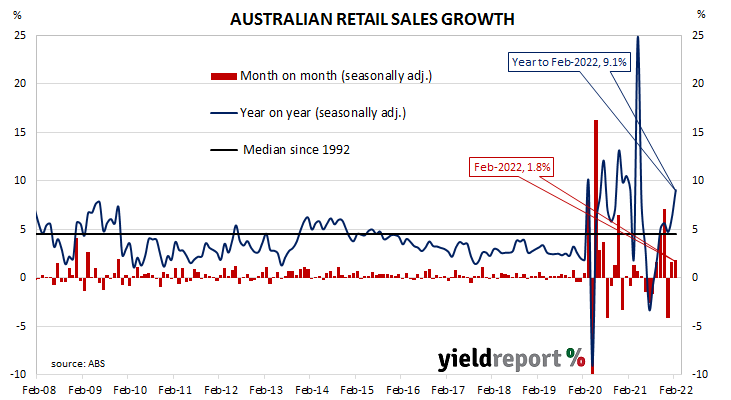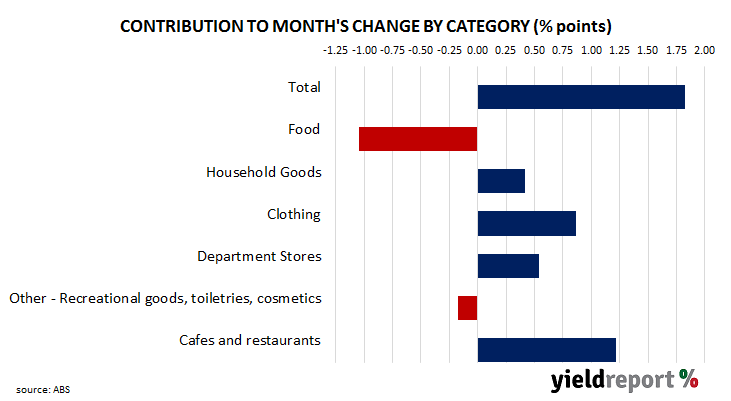Summary: Retail sales up 1.8% in February; greater than 0.9% expected; up 9.1% on annual basis; increase led by spending on discretionary items; some gains “likely due to higher prices”; largest influence on month from restaurants, cafes.
Growth figures of domestic retail sales spent most of the 2010s at levels below the post-1992 average. While economic conditions had been generally favourable, wage growth and inflation rates were low. Expenditures on goods then jumped in the early stages of 2020 as government restrictions severely altered households’ spending habits. Households reverted back to their usual patterns as restrictions eased in the latter part of 2020 and throughout 2021, although not for all categories.
According to the latest ABS figures, total retail sales increased by 1.8% in February on a seasonally-adjusted basis. The gain was greater than the 0.9% increase as well as January’s 1.6% rise. On an annual basis, retail sales increased by 9.1%, up from January’s comparable figure of 6.3%.
“The strong monthly result was driven by social spending, which recovered as Omicron caution dissipated in most states,” said ANZ senior economist Adelaide Timbrell. “Strong discretionary spending in February is a good sign of household financial wellbeing ahead of intensifying inflation.”
Commonwealth bond yields moved in manner similar to that of their US counterparts, rising at the short end but declining farther out along the curve. By the end of the day, the 3-year ACGB yield had gained 7bps to 2.71%, the 10-year rate had slipped 1bp to 2.96% while the 20-year yield finished 2bps lower at 3.23%.
Retail sales are typically segmented into six categories (see below), with the “food” segment accounting for nearly 45% of total sales. However, the largest influence on the total during the month came from the “Cafes and restaurants” segment which increased by 9.7% over the month and thus contributed 1.2 percentage points of the 1.8% increase. Food sales fell by 2.6% over the month and deducted 1.0 percentage point.
“Consumers are clearly seizing the opportunity to return back to shopping and spending in person after last year’s extended delta lockdowns. That said, some of the most recent gains are likely due to higher retail prices rather than volumes,” said Westpac senior economist Matthew Hassan.



